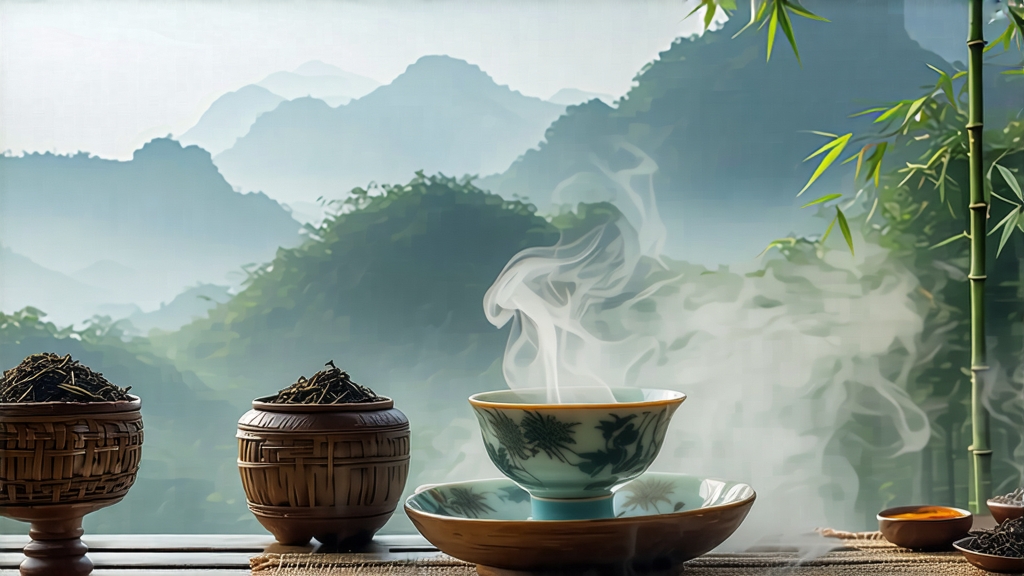
Tucked away in the humid, karst-pitted mountains of southern Guangxi, Liu Bao tea has spent four centuries quietly fermenting while its more famous cousins—Pu-erh, Anhua dark bricks—dominated the caravan routes. To the international palate, Liu Bao remains an enigma: a tea that smells of betel nut, damp bark and long rains, yet finishes with the bright sweetness of dried longan. This article invites you to journey from the Qing-dynasty docks of Wuzhou to the modern gongfu table, unpacking the history, craft, and sensory codes of a tea once traded for medicine and now coveted by collectors from Taipei to Tallinn.
-
Historical footprints: from border tonic to maritime currency
Liu Bao takes its name from the small administrative village of Liu Bao in Cangwu County, Wuzhou prefecture. The earliest written record appears in the 1620s Gazetteer of Wuzhou Fu, noting that “mountain folk steam green leaf, compress into baskets, exchange for salt along the Pearl River.” By the late 17th century, Liu Bao was being loaded onto bamboo rafts, floated down the Xun River to the Pearl River Delta, and transferred to the “Tea Ships” that supplied British, Dutch and Straits-Chinese merchants in Canton. In exchange for silver, Liu Bao returned as ballast in clippers bound for Malacca and Penang, where Indian and Malay dockworkers adopted it as a post-labor digestive. Colonial medical logs from 1898 list “Lieu Pau” as a remedy for “ague and bowel flux,” testimony to the tea’s probiotic reputation. When the Opium Wars rerouted trade, Liu Bao retreated inland, aging in the humid storerooms of Guangxi and Hong Kong, biding its time until the 2006 dark-tea renaissance brought it back to world attention. -
Terroir: why Guangxi’s caves matter
Guangxi’s subtropical monsoon delivers 1,600 mm of rain annually and 78 % average humidity—ideal for the slow microbial fermentation that defines Liu Bao. The tea gardens sit between 200–600 m on red lateritic soil rich in iron and potassium. Crucially, many village warehouses are built against limestone cliffs whose natural caves maintain 25 °C year-round and 85 % humidity, creating a micro-terroir analogous to the wine cellars of Jerez. Leaf harvested from the Da Ye cultivar (a large-leaf Camellia sinensis var. sinensis) develops thick pectin layers that feed the dominant mold, Aspergillus niger, during wet piling, yielding the tea signature earthy yet fruity profile. -
Craft: the six acts of Liu Bao
Act I: Pluck—one bud with three to four leaves in early April when amino acids peak.
Act II: Wilt—leaves are spread on bamboo mats under shade for 4–6 h until the edges soften, reducing grassy volatiles.
Act III: Kill-green—tea is tossed in 200 °C woks for 3 min, halting oxidation yet preserving enzymes vital for later fermentation.
Act IV: Rolling—twice through a mechanical roller to rupture 45 % of cell walls, releasing catechins without the leaf losing strip integrity.
Act V: Wet-pile (wo dui)—the signature step. Piles of 1,000 kg are sprayed with 30 % water by weight, covered with jute sacks, and turned every 5 days. Temperature is kept at 55 °C for 25–35 days, shorter than Pu-erh to retain floral notes.
Act VI: Basket aging—semi-fermented tea is steamed for 30 s, packed into 40 kg cylindrical bamboo baskets lined with wild banana leaf, then stacked in cave warehouses for a minimum of three years. During aging, periodic re-steaming (every 18 months) reactivates microbes, smoothing rough edges and deepening color. -
Grades and styles
Traditional Liu Bao is sold by basket weight: 30 kg, 40 kg, 50 kg. Modern factories add compressed 100 g mini cakes and 250 g bricks for retail. Grading follows a three-tier system:- First Grade (Te Ji): glossy dark-brown strips with golden tips, aged 8–15 years, liquor like black cherry.
- Second Grade (Yi Ji): balanced astringency, bet